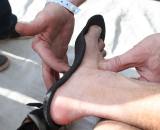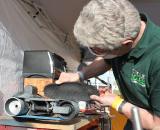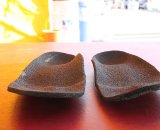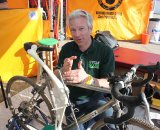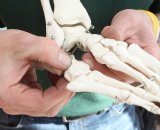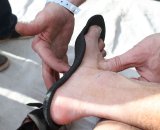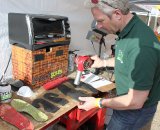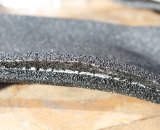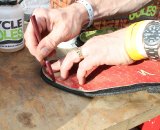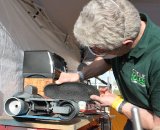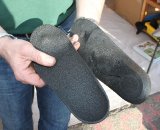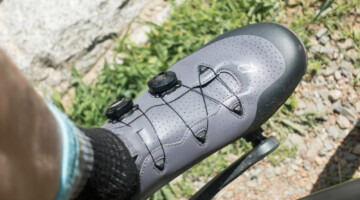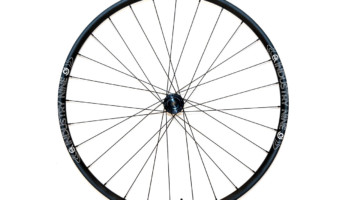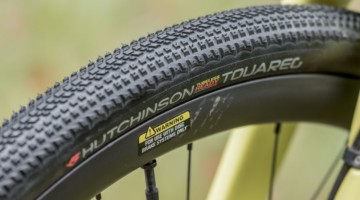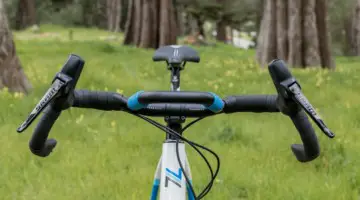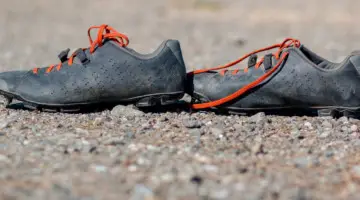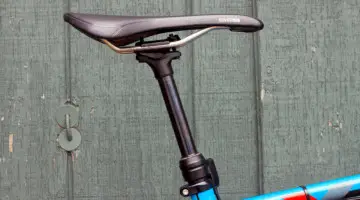by Andrew Yee
Any experienced racer will tell you that a good bike fit is essential for optimal performance and injury prevention. And while it’s easy to tweak seat height, seat position, cleat position and handlebar position, it’s a little more complicated to make sure your feet and knees are in alignment for optimal pedaling efficiency and to minimize strain on your joints. Recently, many shoe brands have come out with options to help in this area. Specialized offers its Body Geometry insoles, which come in three different foot types and include optional wedges to angle the foot, while companies like Shimano and Lake have come out with heat-moldable uppers on the shoe. Of course, there are custom but pricey shoe options from companies like D2 and Rocket 7. And lastly, there are custom-molded insoles for your existing shoes. Cyclesoles is a new company targeting this market by making your existing shoes fit like custom models, getting you to pedal more efficiently in the process.
Scott Peterson, a Certified Orthotist and Pedorthist, founded the company after a long family history in the footbed market. His father, Bill Peterson, offered insoles for skiers, cyclists (Peterson Powerbeds) and other athletes. Cyclesoles is an in-person service that works with bike shops to do a proper fitting of the soles while you’re on the bike. Rather than relying on you to take your own measurements and send them in, as is the case with some other services, a certified fitter will watch you pedal your bike on a trainer, take measurements and then create custom footbeds on the spot that are fitted to your shoes and created to adjust your foot, ankle and knee alignment based on those measurements and observations.
The Theory
The goal behind Cyclesoles and custom shoe options is to both increase biomechanical efficiency through better alignment (and hopefully reduce any associated pain) and to increase power through a more efficient foot-to-pedal connection by preventing your foot from flexing or collapsing under power.
Previously, the closest thing I’ve had before to custom shoes were two different-sized shoes when I was a Junior (I’d outgrow the left before the right), or more recently, Specialized Body Geometry insoles that I’ve moved between shoes – a flat-foot model for my left foot and a high-arch model for my right.
I had the opportunity to sample the Cyclesoles service and product at the Sea Otter Classic this year, and I was quite excited to give it a try. I’ve long wanted custom shoes and am likely an ideal candidate, as I have some of the most mis-matched feet you’ll meet on a cyclocross course. My left foot is a full size larger than my right – but my right foot has a high arch, while my left foot is nearly flat. Both are relatively narrow and especially low volume. Needless to say, finding well-fitting shoes has been a challenge, and I’ve typically bought shoes to fit my larger left foot, leaving my right foot swimming. But custom shoes can approach the prices of complete bikes, that is, out of range for this editor. Cyclesoles aren’t cheap at $199 – more than a lot of shoes – but are a fraction of the price of custom shoes.
The Process
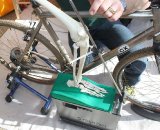
Cyclesoles uses custom tools to measure knee alignment and foot position while you're on the bike. © Cyclocross Magazine
Cyclesoles founder Scott Peterson and Julie Bates, a certified Cyclesoles fitter from Roaring Mouse Cycles (a shop in San Francisco) first watched me pedal my cyclocross bike on a trainer. They monitored my knee alignment as I pedaled, measured my seat height, looked at my cleat position and even measured my leg length differences. What they found is that my knees, especially my left, rotated in during pedaling, and that my legs were slightly different in length. I knew about the leg length difference but didn’t realize my knees moved so much during the pedal stroke. For better or for worse, such analysis will likely identify issues that many riders don’t know they have.
Soon, my shoes were off, my existing insoles pulled out, and they had blank insoles softening in a toaster. Was I about to find a handful of watts of extra power or eliminate occasional knee pain? As Scott pressed the warm insole blanks into the bottom of my feet, I started to have visions of easy podiums this cyclocross season.
The most surprising part of the molding process was the shaping of the insole underneath the toes. Here Scott pressed up under my toe’s knuckles, essentially creating an area for my toes to grip when pulling back at the bottom of the pedal stroke. Interesting.
After the insoles cooled and stiffened, Scott built up each insole by gluing arch supports and wedges to the bottom of it to add structural support for the contours. Lastly, he took the soles to the grinder to smooth the transitions between the components and shaped them to fit my shoes.
Once shaped to fit my shoes, I was back on the bike, pedaling away on the trainer, and then around the area to help them identify any potential fitting problems or further necessary adjustments. Despite being used to metatarsal “button” support from my Specialized insoles, these were far more contoured and, riding around the area, they felt weird but good. Despite all the work that goes into them, and being made out of a nearly-incompressible material, there’s almost no weight penalty. Each of the soles weighed 20g each – barely more than the insoles they replaced.
The next step? Avoid going out and hammering right away and instead let my body get used to them over a few weeks of riding.
Impressions
I took my time to get used to these – it wasn’t hard for me as it was the off-season and I wasn’t riding with much intensity. My right foot quickly got used to the insole, as the arch support fit my arch well, and the correction was less severe than the left shoe. The insole felt great. It filled out some extra room in the shoe (this is my small foot), and even gave me a little extra foot grip – no sliding around in the shoe when pulling back or when things get wet and slippery.
My left foot, however, was a different story. The extreme metatarsal and arch support strained my foot, and because I’m often walking around in poorly-supported shoes or slippers, riding just three to four times a week, I couldn’t get used to the contours of the left insole. After two weeks of trying, I told Cyclesoles it wasn’t working. They acknowledged that my left insole had a strong correction and that they could easily reduce it. I could either drop by Roaring Mouse shop, or mail them in. Because I was about to take a short trip without my bike, I mailed them in, and when I returned, they were at my doorstep.
The adjusted insole was a lot easier to get used to, and has remained in my shoe ever since. Both insoles now feel great – although if I go for a week without riding (a short vacation did just that) slipping on my cycling shoes feels a little weird for a few minutes until my feet stretch out and adjust to the shape of the soles. If you happen to have orthotics for your daily shoes, you probably won’t have such an issue.
Now did I enjoy a ton of extra watts? Well, without training with a power meter, it’s hard to tell. Plus I tried them at a time when I wasn’t training for anything in particular. What I do know is that my feet don’t cramp after longer rides as they did earlier in the season, and that when mashing big gears, especially out of the saddle, I feel like I have a more stable platform. My smaller foot also fits better in the oversized shoe, and the “toe grip” adds a sensation of having a bit more power when pulling through at the bottom of the pedal stroke. My occasional left knee pain unfortunately did not go away – but that’s due to a previously fractured knee cap and probably not something an insole can magically correct.
One downside? My foot now makes so much contact with the insole that my feet get sweaty faster. So wear some wicking socks.
Made for Cyclocross?
While I’m convinced Cyclesoles could be a less expensive route to try than custom shoes, and they can only enhance your cycling, are they a good choice for cyclocross in particular?
My first concern was that because the insoles are so stiff under the heel and arch, I’d have trouble running with them. But the front of the insole is so thin that it flexes naturally under running. The contours under my toes felt a little weird at first, but I got used to that quickly. The upside is that the additional support of the insoles adds a bit of stability to running and dismounts as well – a good thing unless you’re a fan of the barefoot running movement.
For cyclocross, compared to a pair of expensive custom shoes, the Cyclesoles also have a few benefits. They should easily outlast a pair of shoes – and so your $199 should last you a bunch of seasons even if your shoes are trashed after just one. They also can be easily swapped between two pairs of matching shoes. This means if you live in an area where wet training rides and races are the norm, you can buy two pairs of affordable shoes and yet have a dry, custom fit with every ride. And if you swap time between road, mountain and winter shoes? The Cyclesoles might even fit and work well in your other shoes, if they’re the same brand or are similarly built.
The Verdict
If you’ve got hard-to-fit feet, pain while riding or just value a great bike fit and are near an authorized Cyclesoles retailer, these custom footbeds are worth a look. With just an hour of your time, you leave with near instant-gratification – a better-fitting shoe constructed from an on-the-bike analysis of your pedaling motion. While I can’t yet attest to increased power, I certainly have enjoyed better-fitting shoes, an increased sense of stability and an elimination of foot cramps after long rides. That’s money well spent in my book.
Cyclesoles:
MSRP: $199
Weight: 40 grams (size 46/11.5)
For more info: www.cyclesoles.com
Photo Gallery:













